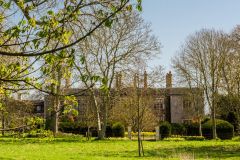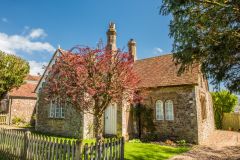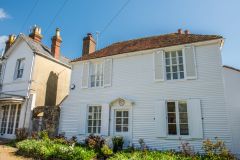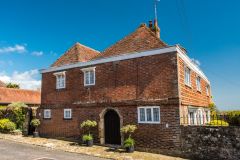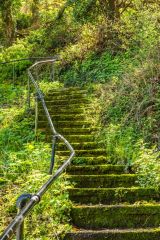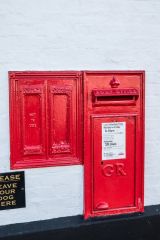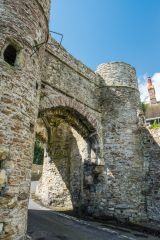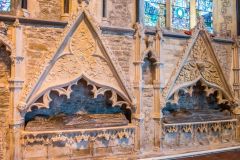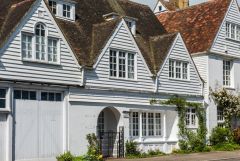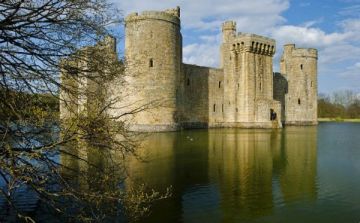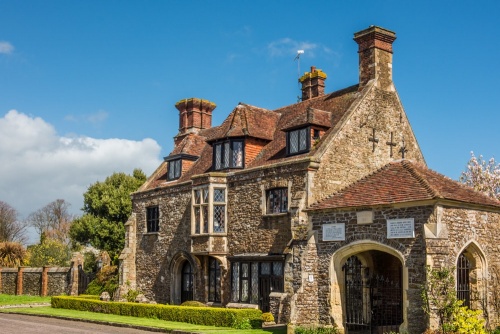
The East Sussex town of Winchelsea may be the smallest town in Britain (though its claim is disputed), with a history going back to the early 9th century. The town boasts an extraordinary 140 listed buildings, a testament to its long and rich history.
History
The first town of Winchelsea, now called by historians Old Winchelsea, grew up at the confluence of the Rivers Brede, Rother and Tillingham. The town became an important shipping port for cross-channel trade and acted as a major naval base.
The importance of Old Winchelsea was recognised when it was named an 'Antient Town', an outpost of the Cinque Ports town of Hastings, with special privileges.
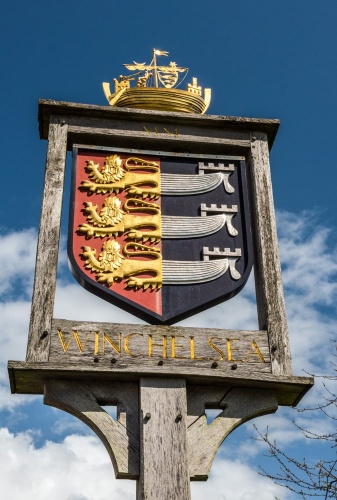
Old Winchelsea must have been a prosperous place, for records suggest that by the 1260s there were more than 50 inns and two churches serving a population of several thousand. There was also a friary, established by the Order of Friars Minor in 1242.
Unfortunately, coastal erosion meant that the port of Old Winchelsea was no longer viable. In 1281 Edward I ordered a new planned town to be built on top of Iham Hill, over a mile away, where a Saxon settlement already existed.
This new Winchelsea was laid out on a grid system, and retained its affiliation with the Cinque Ports even though it was no longer a coastal settlement. It did, however, have a tidal port, as the River Brede runs by the base of the hill.
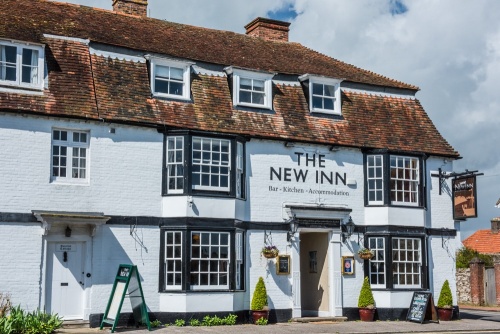
Greyfriars Friary
When the town moved, so did Greyfriars Friary. The order bought an 11-acre plot of land on the outskirts of town, where the roofless ruins can still be seen. The ruined friary church is considered one of the best examples of Franciscan architecture in Britain.
The remains include the chancel, built between 1310-1320 and part of the cloisters. You can see the foundation outline of the monastic buildings south of the church on dry summer days. The chancel ruins are, unfortunately, not open to the public, but you can easily see the 19th-century house built amid the ruins from Monks Walk.
Winchelsea was attacked by the French in 1360 and again in 1380. It remained a prosperous port until the 16th century, when silting caused the port to be closed. Around the same time, Henry VIII built Camber Castle on the low ground between Rye and Winchelsea, probably using stone robbed from Greyfriars.
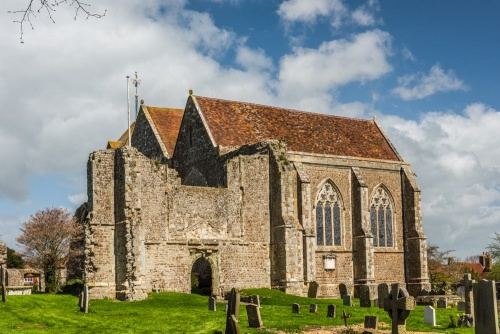
St Thomas the Martyr Church
Winchelsea's parish church dates to the late 13th century and was built as part of Edward I's plan for the new town. The church stands in a two-acre site in the centre of the grid pattern established under King Edward's command. St Thomas the Martyr was under direct royal patronage.
The building has an oddly truncated appearance. It is unclear whether the original plans for a large cruciform church were never finished, or whether the absence of a nave, tower, and transepts was the result of a devastating French raid on Winchelsea in 1380.
The church interior is sublime, and boasts some of the finest medieval tombs in England. Many of these are chantries to the Alard family. The earliest chantry dates to 1312, and features the effigy of Admiral Gervase Alard in armour, beneath an ornately carved canopy.
Another memorial commemorates archbishop Robert de Winchelsea (b 1230), a native of Winchelsea. A much more modern highlight is a series of stunning 20th-century stained glass windows designed by Douglas Strachan.
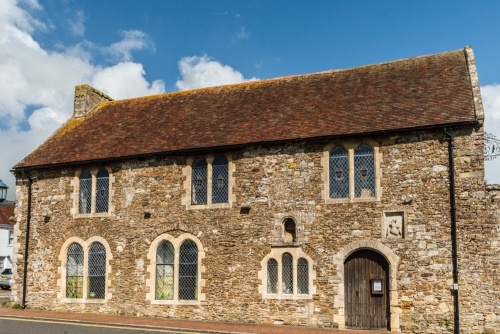
Court Hall
Across High Street from the churchyard is the Court Hall, a two-storey medieval building now housing a museum of local life. Court Hall was built in the 14th century and has a 13th-century doorway in the east wall, brought from elsewhere.
Court Hall was used as the Winchelsea Town Hall from 1557, and the Mayor of Winchelsea is elected here annually on Easter Monday. The lower floor of Court Hall was originally used as the town gaol.
Museum exhibits include civic regalia, a model of the medieval town, local pottery, paintings, old photographs, and civic seals, along with the silver mace used by the town's sergeant-at-arms.
At the eastern end of High Street runs Strand Hill, home to several medieval buildings, including Strand House, a picturesque timber-framed building erected in 1425. By the middle of the 16th century, Strand House was serving as the town workhouse, housing up to 60 residents. Other historic buildings nearby include the Old Malt House and Appletree Wick, which together with Strand House made up 'The Old Poor Houses'.
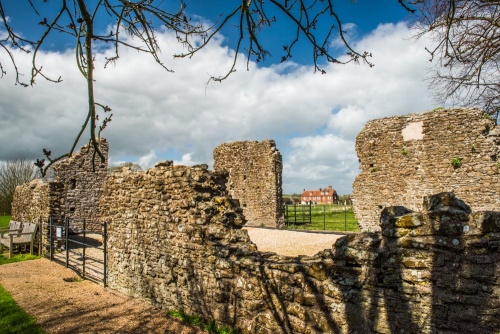
Blackfriars Barn
Opposite the Methodist Chapel on Rectory Lane stands the remains of a 14th-century building known as Blackfriars Barn, possibly linked to a medieval Dominican friary. Beneath the above-ground ruined walls is a 14th-century cellar which can occasionally be visited by arrangement with the National Trust. One good reason to visit the Blackfriars Barn cellars is to see a series of a dozen ships scratched into the plasterwork.
The Dominicans came to Winchelsea in the early 14th century but the ruins we see today date from the middle of that century. The friary passed into private hands at the Dissolution of the Monasteries, and it seems likely that stone from the friary was used to build Camber Castle.
Medieval Gateways
Three of Winchelsea's medieval gateways remain.
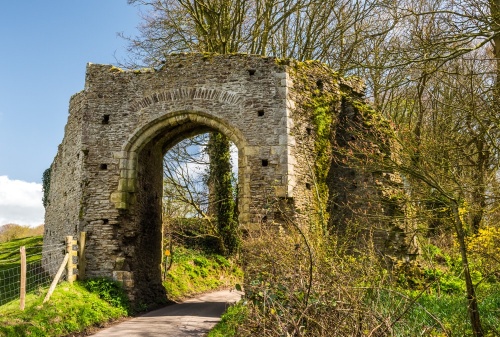
New Gate
New Gate is new in name only; it dates to the 13th century. The gate straddles Wickham Rock Lane, to the southwest of the town. Beside the gateway runs the town ditch, which acted as a water channel and a secondary line of defence.
New Gate failed in its primary defensive purpose, however, for it was through this gateway that the French gained entry to the town in 1380. We don't know for certain, but tradition says that a traitor within the walls let them in. The result was devastation; they sacked the town and may have destroyed parts of the church.
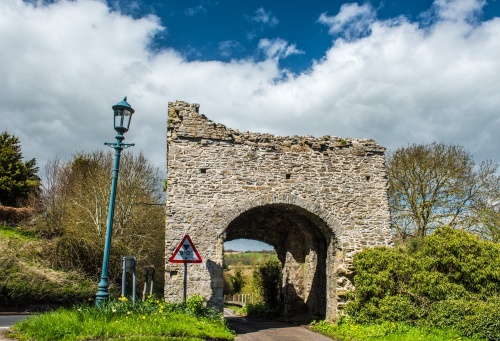
Pipewell Gate (Ferry Gate)
At the junction of North Street and Ferry Hill stands Pipewell Gate. This is the youngest of the three medieval gateways to Winchelsea. The original gate, which gave access to a ferry, was destroyed by the French in the 1380 raid. What we see today is its replacement, built in 1404 by the Mayor of Winchelsea, John Helde.
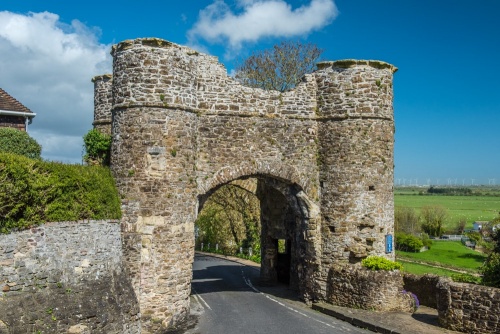
Strand Gate
The final original medieval gate, and the most impressive, is the Strand Gate, which gave access to the port. The gate stands at the eastern end of High Street, at its junction with Strand Hill.
This impressive gateway dates to the late 13th century and boasts four round towers linked to short sections of wall. The main passage has two portcullises, one at each end. The original tower was a third higher than the tower we see today, with a porter's lodge in the north-eastern tower and a chamber over the central arch for the portcullis winding mechanism.
It is fascinating to think that the original gateway would have been rendered white, which would have made it a striking sight from the river approaches to the town.
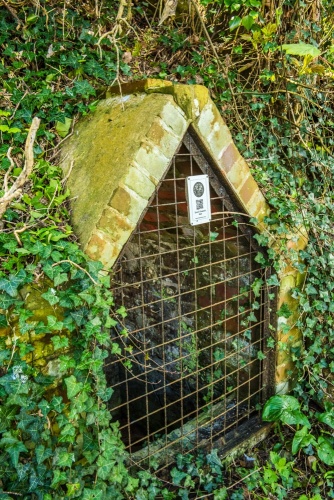
Queen Elizabeth's Well
At the junction of Mill Road and Barrack Square, a set of steep steps leads down the cliff in the direction of Tanyard Lane (the A259). These stone steps are known locally as the Spring Steps. Just over halfway down the steps, a short, unmarked path leads off to the left, across the slope of the hill, to Queen Elizabeth's Well, one of six wells that supplied Winchelsea with water.
Be careful! The slope is steep, and the path isn't maintained. It can be very slippery in wet weather. The well is protected by a triangular arch made of red brick, with an iron grate across the opening.
The well is named after Elizabeth I, who visited Winchelsea in 1573 and dubbed the town 'Little London'.
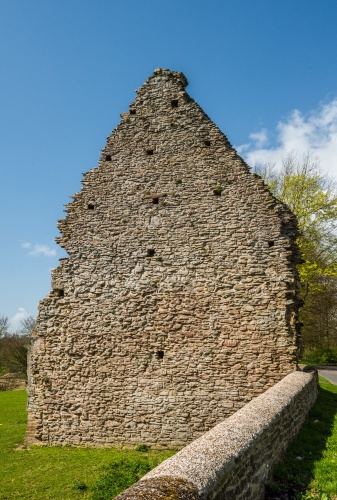
St John's Hospital
Where Monks' Walk turns west to join the A259 at the southeastern edge of Winchelsea, you can see a tall gable end of a building linked to a stone wall. This is all that remains of St John's Hospital, an almshouse that catered to the needs of the elderly poor.
Two more almshouses, dedicated to St Bartholomew and the Holy Rood respectively, stood in the field beyond the ruins of St John's. St John's was the oldest of the three, probably dating to the late 13th century.
Also in the field are turf-covered foundations of the medieval south suburbs of Winchelsea. This area of the town was abandoned after raids by the French and the slow decline of Winchelsea after its port silted up.
The 1066 Country Walk long-distance trail leads past the Hospital ruins, past Wickham Manor Farm, once owned by William Penn, the founder of Pennsylvania, to New Gate, mentioned above.
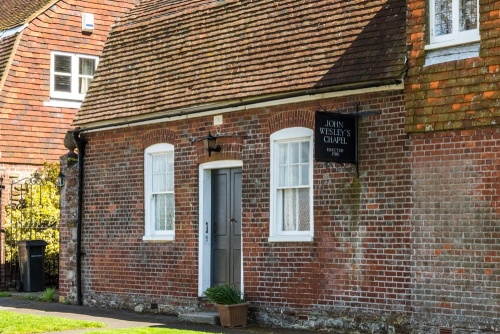
Methodist Chapel
On Rectory Lane stands the Methodist Chapel, built in 1785. Methodism has a long history in Winchelsea. John Wesley preached here in 1771 and made such an impression that the townsfolk banded together and erected the chapel, which remains essentially unaltered to this day.
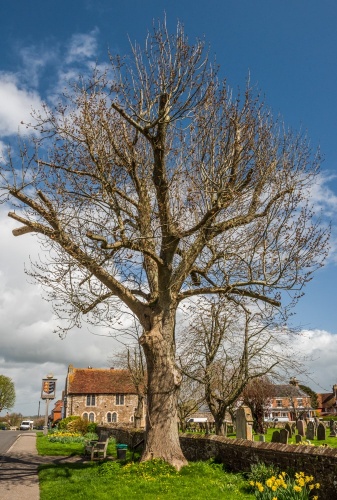
Wesley's Tree
Wesley returned to preach in the chapel in 1789 and again in 1790. On that last occasion, such was the interest in hearing him speak that the Chapel was deemed too small, but he was barred from using the parish church. Instead, Wesley spoke in the open air, seated beneath an elm tree just outside the western edge of St Thomas the Martyr's churchyard opposite New Inn.
Unfortunately, so popular was Wesley, and so far-reaching his legacy, that 'Wesley's Tree' became a target for souvenir hunters, who damaged the tree so badly that it died. Thankfully, a sapling from the original elm was planted in its place, and this descendant of the original tree thrives.
Across from Wesley's Tree is New Inn, a picturesque 18th-century coaching inn.
More Historic Buildings
Rookery Cottage
This picturesque weatherboarded cottage on Rookery lane dates to the 18th century, but it sits on cellars built in 1300.
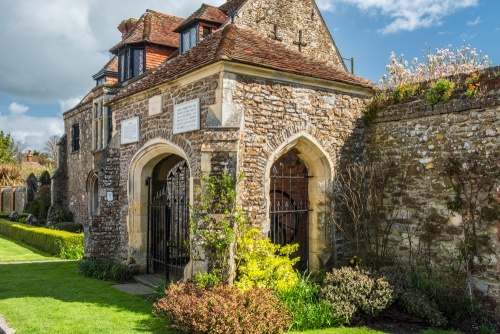
Town Well
A peculiar little pyramidal building on Castle Street houses the town well, a gift to the community by Thomas Dawes, who had the well sunk in 1851. The building may be Victorian, but it reuses medieval arches and buttresses. The shaft below the beautifully preserved well mechanism plunges 130 feet down and is lined with red brick.
Look for the notice outside the well house, which reads, 'Notice is hereby given that the well is to be closed at 7 O'Clock in the evening and opened at 6 O'Clock in the morning and to be closed all day on the Sabbath. By order of the Mayor'.
Barrack Square
Formerly called Bear Square after a bear pit that was sited here, Barrack Street takes its present name from the fact that soldiers were stationed here during the Napoleonic Wars. The Armoury is an 18th-century building that began life as the Bear Inn. It also served as a workplace for weaving cambric and lawn fabric, under the control of the English Linen Company.
Winchelsea is an extraordinary town, steeped in history. Every house has a story to tell, and many of them stand on much older foundations. A day spent exploring historic Winchelsea is a day well spent!
Getting There
Winchelsea is on the A259 between Rye and Icklesham. There is no official visitor parking, but we found it easy to park along one of the town centre streets.
About Wincheslsea
Address: A259,
Winchelsea,
East Sussex,
England
Attraction Type: Town
Location: On the A259 halfway between Icklesham and Ryue.
Website: Wincheslsea
Location map
OS: TQ907180
Photo Credit: David Ross and Britain Express
HERITAGE
 We've 'tagged' this attraction information to help you find related historic attractions and learn more about major time periods mentioned.
We've 'tagged' this attraction information to help you find related historic attractions and learn more about major time periods mentioned.
Find other attractions tagged with:
NEARBY HISTORIC ATTRACTIONS
Heritage Rated from 1- 5 (low to exceptional) on historic interest
Winchelsea Court Hall Museum - 0.4 miles (Museum) ![]()
Winchelsea, St Thomas the Martyr Church - 0.5 miles (Historic Church) ![]()
Blackfriars Barn - 0.5 miles (Historic Building) ![]()
St John's Hospital - 0.8 miles (Historic Building) ![]()
Camber Castle - 1 miles (Castle) ![]()
Lamb House - 1.6 miles (Historic Building) ![]()
Rye Castle Museum - 1.7 miles (Museum) ![]()
Rye Art Gallery - 1.7 miles (Museum) ![]()
Nearest Holiday Cottages to Wincheslsea:
Winchelsea Beach, East Sussex
Sleeps: 4
Stay from: £391 - 1804
More self catering near Wincheslsea
